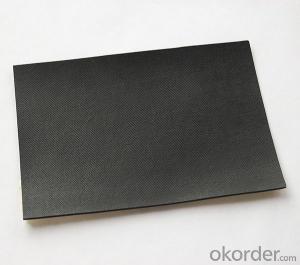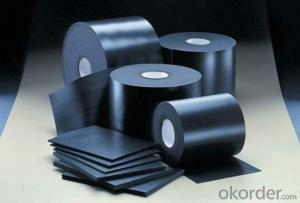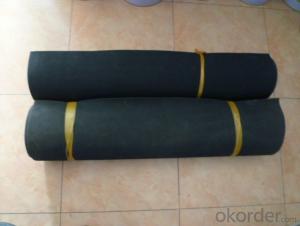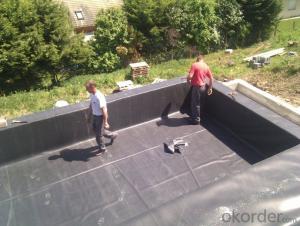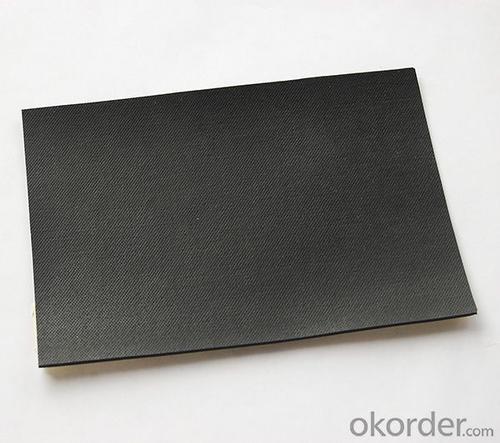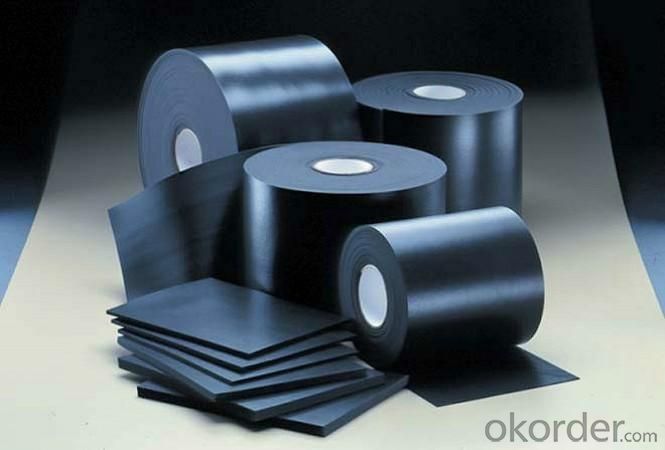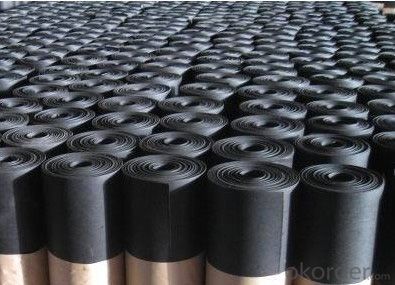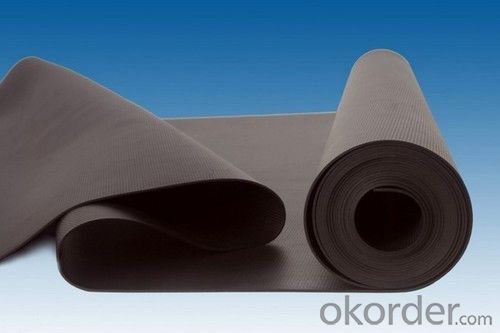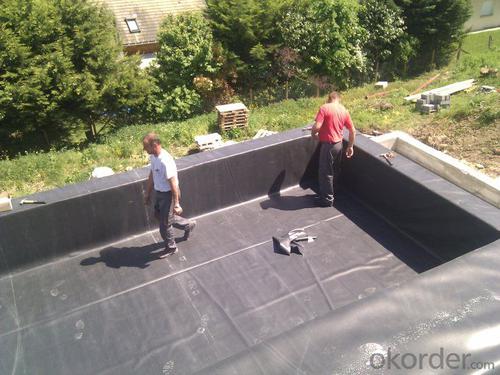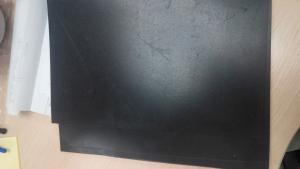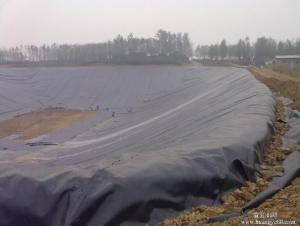EPDM Waterproof Membrane with 0.8mm for Roof Project
- Loading Port:
- Shanghai
- Payment Terms:
- TT OR LC
- Min Order Qty:
- 50000 m²
- Supply Capability:
- 5000000 m²/month
OKorder Service Pledge
OKorder Financial Service
You Might Also Like
EPDM Waterproof Membrane with 0.8mm for Roof Project
Description Of EPDM Waterproof Membrane with 0.8mm for Roof Project:
1. EPDM waterproof membrane is made from ternary ethylene-propylene rubber, which is for waterproofing of exposed and non-exposed applications.
2. EPDM waterproof membrane production adopts the world-advanced equipment of cold feeding extrusion and continuous vulcanization technology.
3. EPDM waterproof membrane is of high elasticity among high polymer waterproof materials and becomes a world-popular waterproofing material.
Main Features of EPDM Waterproof Membrane with 0.8mm for Roof Project:
1.Excellent anti aging performance ,service life up to 50 years.
2.High extension rate,high tensile strength ,small size changes at heat treatment.
3.Good plant roots penetrability resistance and can be made waterproofing layer of planting roof.
4.Special modified molecular structure ,effectively resolving the current domestic and foreign glue joint problem.
5.Good low temperature flexibility ,and good performance of adapting to ambient temperature changes.
6.Convenient application ,solid joint ,no environment pollution.
7.Chemical corrosion resistance ,can be used for special occasions.
8.Good anti-perforated.
Specifications of EPDM Waterproof Membrane with 0.8mm for Roof Project:
| Material | EPDM Rubber |
| Size | 1.2m (width)*20m (length) or customized, weldable type 2.05m or 4m width |
| Thick | 1.2mm, 1.5mm, 2.0mm |
| Type | Vulcanized & Weldable |
| Pattern | Non-reinforced (homogeneous) |
| Certificate | ISO9001/14001 |
Applications of EPDM Waterproof Membrane with 0.8mm for Roof Project:
1. Roofs, Basement, Toilet
2. Industrial and civil building waterproofing
3. Geo-synthetic liner for swimming pool, channels, irrigation system
4. Especially suit for projects with high requirements in durability, anti-corrosion and deformation
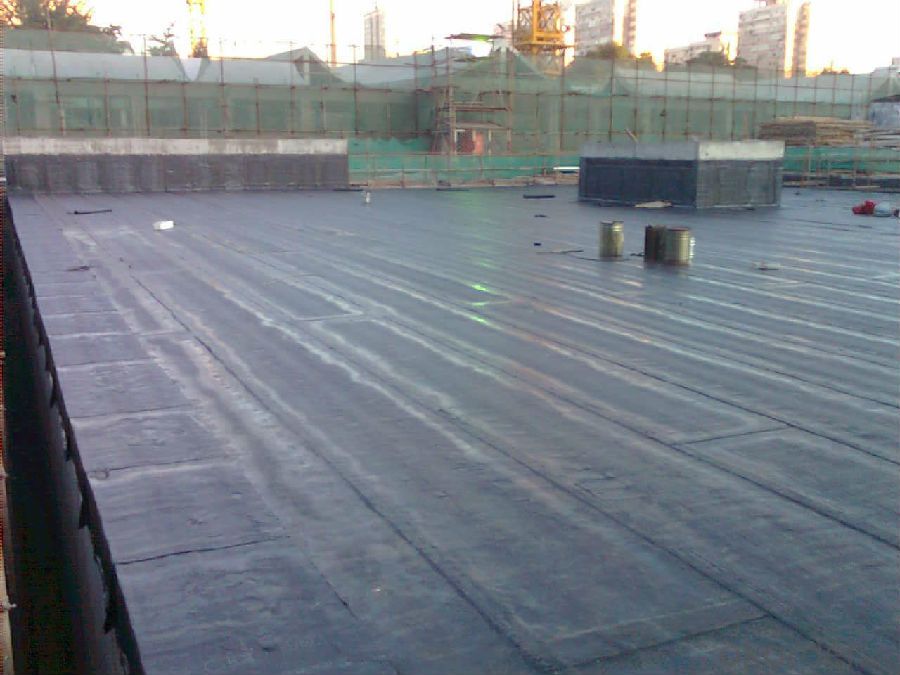
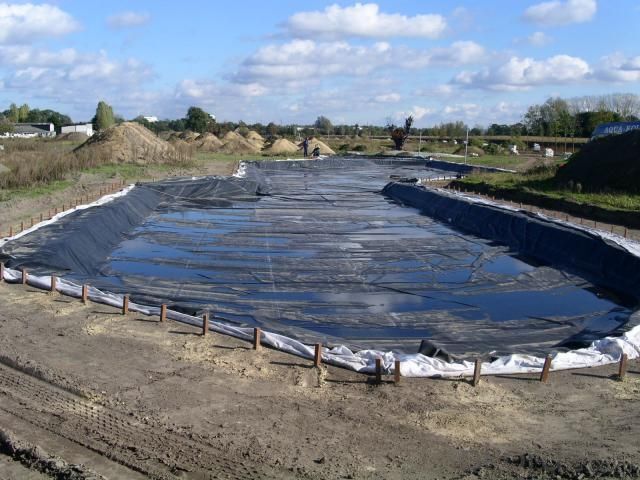

IMages of EPDM Waterproof Membrane with 0.8mm for Roof Project:




FAQ of EPDM Waterproof Membrane with 0.8mm for Roof Project:
1. What are we supplying?
We are specialized in producing Colorful Asphalt Roof Shingle, SBS/APP modified bitumen waterproof membrane, Self adhesive bitumen waterproof membrane, PVC waterproofing membrane, EPDM rubber roofing membrane, Single Component Polyurethane Waterproof Coating, and Spray Polyurea Waterproof Coating
.
2. How Many years experience do we have?
We have been exported to more than 20 countries in the past 15 years.
3. How long do we usually reply your request?
We always reply our customer within 24 hours.
- Q: Can waterproofing membranes be used on expansion joints?
- Yes, waterproofing membranes can be used on expansion joints. Expansion joints are designed to accommodate movement and prevent damage caused by thermal expansion or contraction of building materials. Waterproofing membranes can be applied to expansion joints to create a barrier against water infiltration, which helps to maintain the structural integrity of the joint and prevent water damage to surrounding areas. It is important to select a waterproofing membrane that is flexible and able to withstand the movement of the joint without cracking or deteriorating. Additionally, proper installation techniques should be followed to ensure a watertight seal around the expansion joint.
- Q: Can waterproofing membranes be used on rooftop terraces?
- Yes, waterproofing membranes can indeed be used on rooftop terraces. In fact, they are often utilized to protect the structural integrity of the terrace and prevent water damage to the underlying structure. Rooftop terraces are exposed to various weather conditions, including rain, snow, and UV rays, which can lead to leaks and deterioration. Waterproofing membranes act as a barrier, preventing water from seeping through the surface and causing damage. These membranes are specifically designed for outdoor use and can withstand the harsh conditions typically found on rooftops. They are available in various materials such as modified bitumen, EPDM (ethylene propylene diene terpolymer), and PVC (polyvinyl chloride), allowing for flexibility in choosing the most suitable option for a specific terrace. Additionally, waterproofing membranes can be installed under various types of terrace finishes, including pavers, tiles, and decking, providing a versatile solution for different design preferences. Overall, the use of waterproofing membranes is highly recommended for rooftop terraces to ensure their longevity, durability, and resistance to water-related issues.
- Q: How does a waterproofing membrane handle water infiltration from above?
- The purpose of a waterproofing membrane is to prevent water infiltration from above. It achieves this by creating a barrier that is impermeable to water. Typically, the membrane is made of a durable and flexible material, such as rubber or asphalt, which is specifically designed to withstand exposure to water. When water comes into contact with the surface above the waterproofing membrane, it acts as a protective layer that stops the water from seeping through and reaching the underlying structure. The membrane effectively repels the water, ensuring that it does not enter the building or any other protected area. To further enhance its resistance to water, the membrane is often installed with overlapping seams and sealed using adhesive or heat to create a continuous and watertight barrier. This prevents any potential gaps or weak points where water could potentially seep in. In addition to its impermeability, a waterproofing membrane is also designed to handle water infiltration by providing drainage pathways for any accumulated water on its surface. This is achieved through the use of channels or slopes that direct the water away from the protected area, effectively draining it and preventing any damage caused by water accumulation. Overall, a waterproofing membrane is specifically engineered to handle water infiltration from above. It accomplishes this by creating a strong and impenetrable barrier, as well as providing effective drainage mechanisms to prevent water accumulation.
- Q: Can a waterproofing membrane be used on plastic surfaces?
- Indeed, plastic surfaces can indeed benefit from the use of a waterproofing membrane. These membranes have been specially designed to create a protective barrier that hinders the penetration of water, and they are capable of adhering to various surfaces, including plastic. To ensure a successful application, the most important aspect is properly preparing the surface. The plastic surface should be thoroughly cleaned, dried, and devoid of any dirt, dust, or oils that could impede the membrane's ability to adhere. It is also crucial to select a waterproofing membrane that is compatible with plastic surfaces and possesses the flexibility and expansiveness necessary to prevent cracking or peeling. By adhering to the manufacturer's instructions and employing an appropriate product, a waterproofing membrane can effectively seal and safeguard plastic surfaces against water damage.
- Q: Can a waterproofing membrane be used in high-rise buildings?
- Yes, a waterproofing membrane can be used in high-rise buildings. In fact, it is highly recommended to incorporate a waterproofing system in high-rise buildings to protect them from the damaging effects of water infiltration. Waterproofing membranes are designed to provide a barrier against water ingress, preventing leaks and moisture damage to the structure. They are commonly used on roofs, basements, foundations, and other areas that are exposed to water or moisture. The selection of the appropriate waterproofing membrane will depend on various factors such as the specific building design, construction materials, and environmental conditions. It is important to consult with experienced waterproofing professionals to determine the most suitable membrane system for a high-rise building to ensure long-term protection against water-related issues.
- Q: How does a waterproofing membrane handle exposure to chemicals?
- Different types of waterproofing membranes have varying levels of resistance to chemicals. Some membranes are specifically designed to withstand exposure to chemicals, while others may not be as resistant. Typically, a waterproofing membrane that is specifically formulated to handle chemicals will have certain properties that make it more resistant. These properties may include a thicker material, increased flexibility, and additives that enhance chemical resistance. When a waterproofing membrane is exposed to chemicals, it should ideally be able to resist degradation, maintain its physical properties, and continue to effectively repel water. However, it is important to consider that certain chemicals may still have a negative effect on the membrane, especially if they are highly corrosive or reactive. To ensure the best performance when dealing with chemical exposure, it is recommended to choose a waterproofing membrane that is specifically designed to handle the types of chemicals it will encounter. It is also important to follow the manufacturer's guidelines for installation and maintenance to maximize the membrane's chemical resistance and overall lifespan. Regular inspections and maintenance are essential for identifying any signs of chemical damage or degradation on the waterproofing membrane. In cases where significant chemical exposure is expected, additional protective measures such as chemical-resistant coatings or overlays may be necessary to provide an extra layer of defense. In conclusion, the ability of a waterproofing membrane to withstand exposure to chemicals depends on its specific formulation and design. By selecting a membrane with appropriate chemical resistance properties and practicing proper maintenance, its longevity and effectiveness in chemical environments can be ensured.
- Q: Can a waterproofing membrane be used on tunnels with railway systems?
- Yes, a waterproofing membrane can be used on tunnels with railway systems. The membrane helps to prevent water ingress and moisture damage to the tunnel structure, ensuring the safety and longevity of the railway system.
- Q: Can a waterproofing membrane be used on tunnels with emergency exits?
- Yes, a waterproofing membrane can be used on tunnels with emergency exits. In fact, it is highly recommended to use a waterproofing membrane in such tunnels to prevent water infiltration and protect the structural integrity of the exits. Waterproofing membranes are designed to create a barrier against water and moisture, ensuring that the tunnels remain dry and free from water damage. This is especially important for emergency exits, as they need to be accessible and functional at all times. By installing a waterproofing membrane, the tunnels can be effectively protected from potential water ingress, ensuring the safety and usability of the emergency exits.
- Q: Does a waterproofing membrane prevent water damage to building materials?
- A waterproofing membrane is specifically designed to shield building materials from water damage. Its purpose is to act as a barrier, preventing water from infiltrating the structure and causing harm. Typically, the membrane is applied to areas prone to water intrusion, such as roofs, basements, and foundations. By creating a watertight seal, it effectively stops water from seeping through and harming the building materials. This safeguard is essential in maintaining the structure's integrity and preventing issues like mold growth, rot, and material decay. However, it's crucial to acknowledge that the effectiveness of a waterproofing membrane can vary based on the product's quality and proper installation. Regular maintenance and inspections are also necessary to ensure the membrane remains intact and continues to safeguard against water damage.
- Q: Can a waterproofing membrane be used in bathrooms or showers?
- Yes, a waterproofing membrane can be used in bathrooms or showers. In fact, it is highly recommended to use a waterproofing membrane in these areas to prevent water damage and leakage. A waterproofing membrane acts as a barrier that prevents water from penetrating through the walls, floors, and other surfaces in the bathroom or shower. It is typically applied before tiling or finishing the surfaces, providing an extra layer of protection against moisture and ensuring that the underlying structure remains dry. This not only helps to prevent mold and mildew growth but also prolongs the lifespan of the bathroom or shower.
Send your message to us
EPDM Waterproof Membrane with 0.8mm for Roof Project
- Loading Port:
- Shanghai
- Payment Terms:
- TT OR LC
- Min Order Qty:
- 50000 m²
- Supply Capability:
- 5000000 m²/month
OKorder Service Pledge
OKorder Financial Service
Similar products
Hot products
Hot Searches
Related keywords
